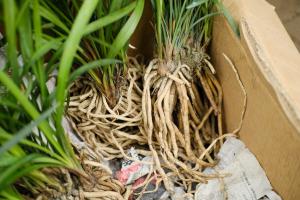Signs Your Aloe Plant is Dying
Aloe plants are known for their healing and soothing properties, making them highly sought after houseplants. However, like any other plant, aloe plants can start to look sickly and eventually die if certain conditions are not met. Here are some signs your aloe plant is dying:
Yellowing or Browning Leaves
If your once vibrant green aloe plant starts to develop yellow or brown leaves, it is a sure sign that the plant is struggling. This may be a result of overwatering or underwatering, which can lead to root rot or dehydration respectively. Moreover, exposure to direct sunlight or high temperatures can also cause the leaves to change color, so ensure the plant is placed in a spot with sufficient shade.
Soft and Mushy Leaves
If the leaves of your aloe plant feel soft and squishy, it is likely that the plant is suffering from root rot, which is caused by overwatering. Aloe plants are succulents, meaning they store water in their leaves and do not require frequent watering. You want to avoid drenching the plant, as it is accustomed to arid conditions in its native environment.
Stunted Growth or Wilting
Aloe plants require plenty of sunlight and well-draining soil to thrive. If your plant is not getting enough sunlight, it can become stunted and stop growing. In contrast, if the plant is rooted in waterlogged soil or its roots are damaged, it may start to wilt and fail to support the rest of the plant. In either case, it is important to make the necessary adjustments to rectify the issue.
Solutions to a Dying Aloe Plant
If your aloe plant is showing any of the above signs, it is important to take action quickly to prevent further damage or death. Here are some solutions to help revive your aloe plant:
Adjusting Watering Schedule
You want to make sure you water your aloe plant only when the soil is dry to the touch. In general, watering it once a week is sufficient during the growing season, while less frequent watering is required during winter months when the plant is dormant. It is important to use a well-draining soil and pot to prevent water from sitting and causing root rot.
Moving the Plant
One of the most common mistakes when growing aloe plants is placing them in direct sunlight, where the leaves can be burned or scorched. If your plant is showing signs of sun damage, move it to a spot with partial shade or indirect sunlight. Additionally, ensure that the temperature is not too high, as this can cause the leaves to dry out and turn brown.
Repotting the Plant
If the root system of your aloe plant is showing signs of rotting, it is ideal to repot the plant into a new container with fresh soil. Carefully remove the plant and cut away any rotting roots before repotting it in a well-draining soil mix. Wait for a few days before watering it, to allow the roots to adjust to their new environment.
In summary, a dying aloe plant can be saved by adjusting its care routine and addressing any underlying problems quickly. Regular watering, moderating sunlight exposure, and repotting the plant can all help revive your aloe plant and keep it thriving for years to come.

 how many times do yo...
how many times do yo... how many planted tre...
how many planted tre... how many pine trees ...
how many pine trees ... how many pecan trees...
how many pecan trees... how many plants comp...
how many plants comp... how many plants can ...
how many plants can ... how many plants and ...
how many plants and ... how many pepper plan...
how many pepper plan...





























